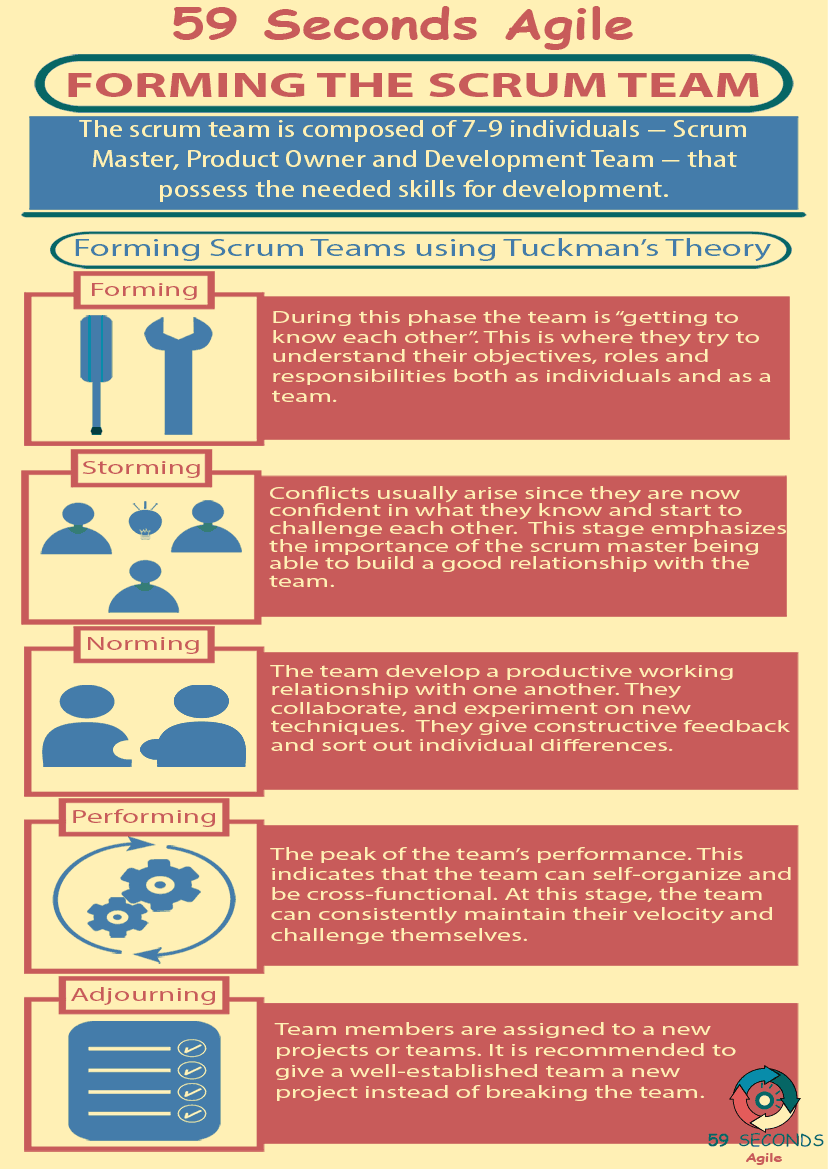
Forming the Scrum Team for Scrum Masters – Part 2
Forming Scrum Teams using Tuckman’s Theory
Forming
A very common scenario in the scrum team during this stage is that they are awkward and aloof with each other. Since all roles are brought together in one small team, it is common that the team members observe and figure out on how they can integrate their individual working styles. At this stage, the scrum master plays an important role. It is the scrum master’s responsibility to guide the team in understanding the concept of agile and a cross-functional team. He can start by facilitating a meeting to create a working agreement to help the team identify their initial approach on how they will work together. The scrum master should make himself available to answer any clarifications the team may have, conduct training for familiarization and give feedback and suggestions for improvement.

Storming
Storming is the most challenging stage of developing teams. This is where conflicts usually arise since they are now confident in what they know and start to challenge each other. The common cause of conflicts falls on each team member’s working style and on how this affects the team goal. The scrum master should be more attentive at this stage as this can be both beneficial and destructive. He should be able to bring the team together by bridging their gaps through positive influencing and creative facilitation in meetings. He should be observant of the characteristics of each team member and be able to suggest activities that can help the team reach a common understanding. This stage emphasizes the importance of the scrum master being able to build a good relationship with the team.
Forming Scrum Teams using Tuckman’s Theory
Norming
At this point, the team was able to deliver and work together for a number of sprints already. With this, the team was able to develop a productive working relationship with one another. They now have an idea of what works for them and what doesn’t. They are more open to collaborating, experiment with new techniques they can apply and listen to each other’s opinions and suggestions. They can now give constructive feedback and sort out individual differences. The role of the scrum master at this stage revolves around facilitating discussions, encouraging updates on the working agreement, team building and continue helping the team identify and take action on items for improvement.
Our Favourite Agile Books
We found these books great for finding out more information on Agile Scrum:
Performing
This is the peak of the team’s performance. This indicates that the team can self-organize and be cross-functional. At this stage, the team can consistently maintain their velocity and challenge themselves to stretch their usual capacity. There is minimal supervision needed from the scrum master at this point. He can focus on looking at each team member’s development to sharpen their technical contribution to the team.
Adjourning
Like every project, it will come to an end. During this time, to promote the growth of the team or an individual, team members can be assigned to a new project or team. However, in Agile setup, it is recommended to give a well-established team a new project instead of breaking the team. A team can be more agile and deliver more if they have a good working relationship with each other. For a project to succeed, the team should have all the necessary skills needed and be guided properly. This is key to maximizing the benefits of Agile development and reaping its promise of high quality and quick delivery. With the help of the scrum master, the right mindset (self-organization and being cross-functional) and team culture of trust and collaboration should be developed to ensure productivity and efficiency.

